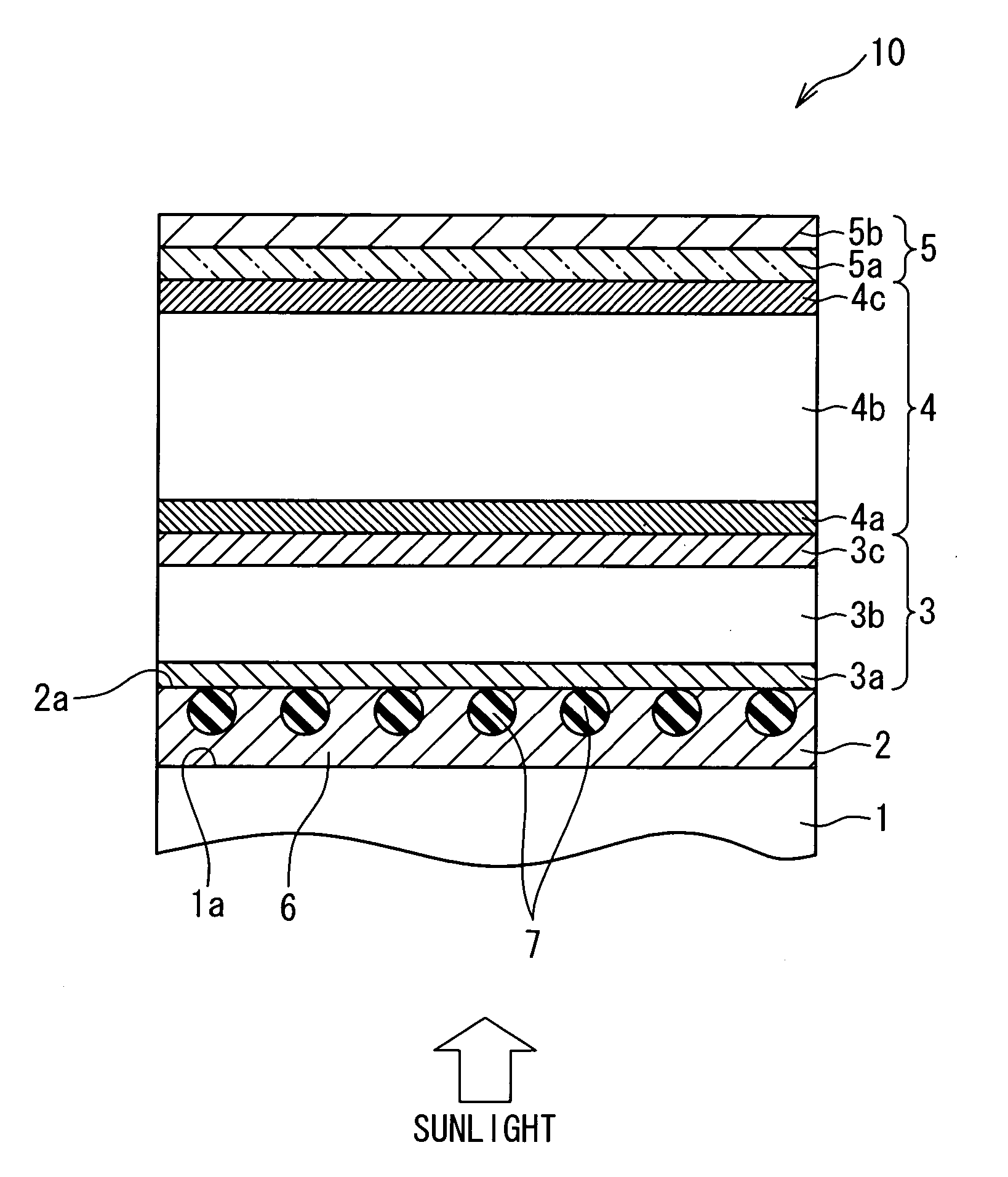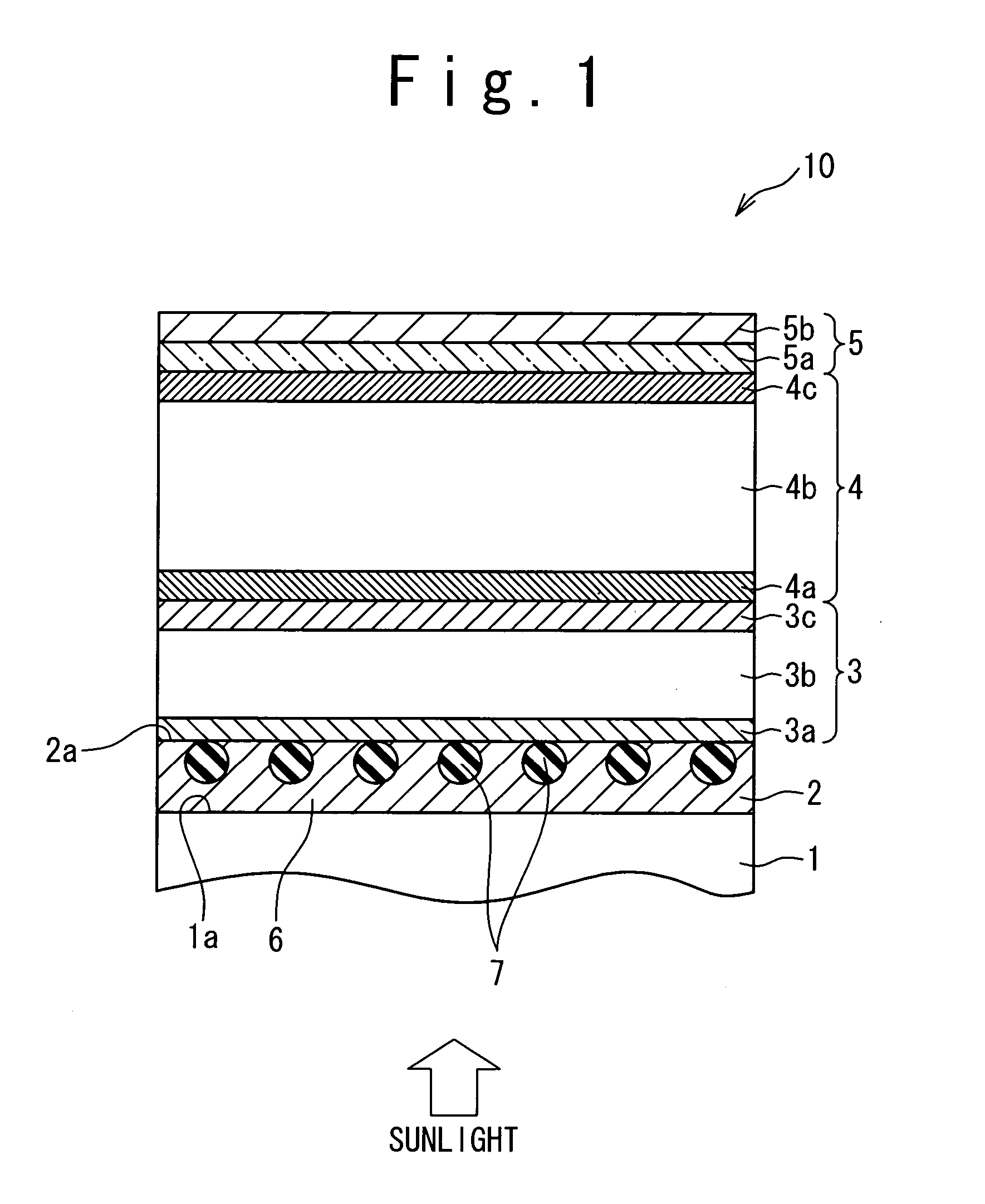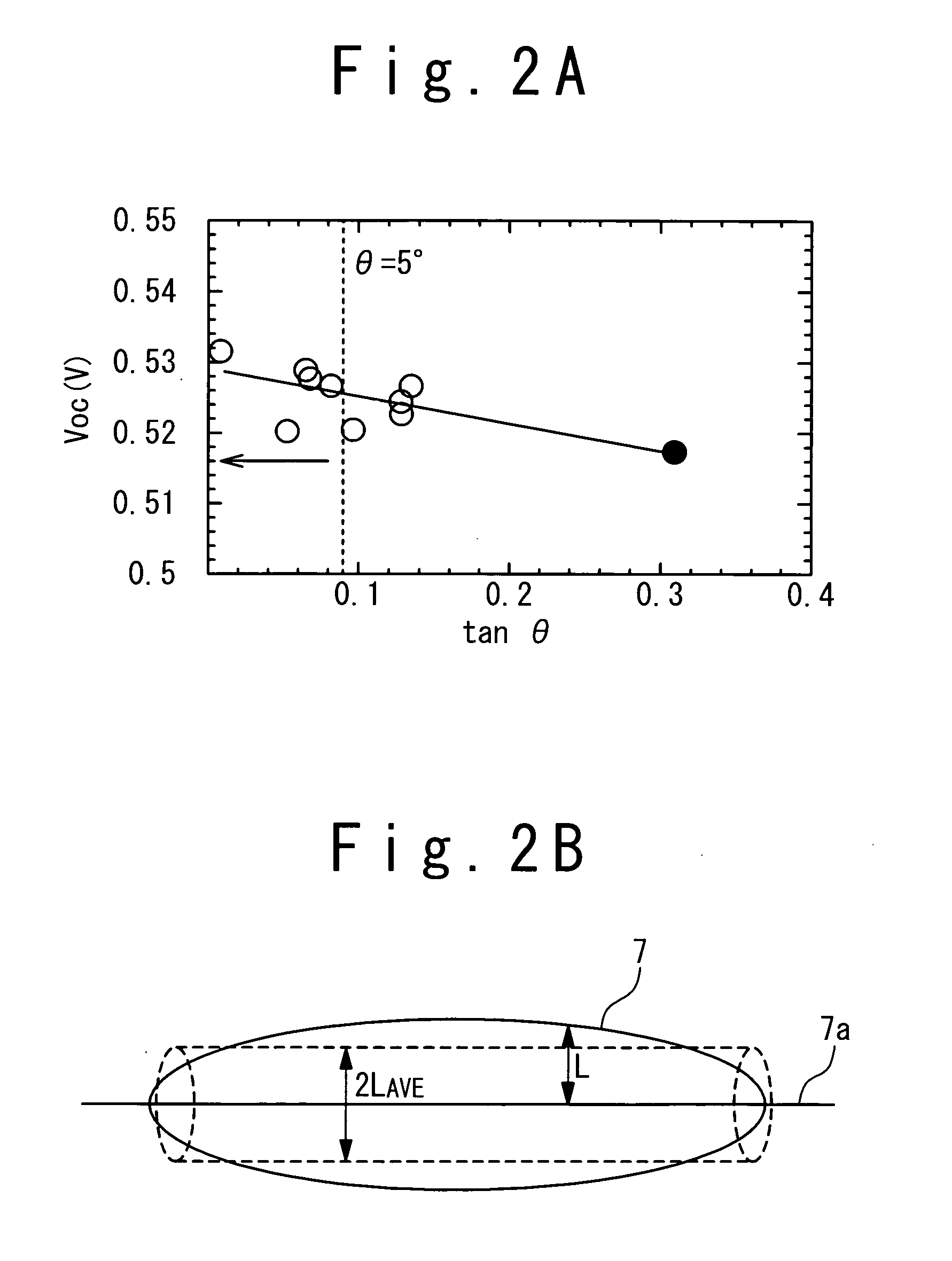Photoelectric conversion device
a conversion device and photoelectric technology, applied in the direction of semiconductor/solid-state device manufacturing, semiconductor devices, electrical devices, etc., can solve the problems of reducing the conversion efficiency of thin-film-based photoelectric conversion devices, reducing the output voltage and reducing the conversion efficiency of conventional techniques based on textured transparent electrodes. achieve the effect of improving the conversion efficiency of the photoelectric conversion devi
- Summary
- Abstract
- Description
- Claims
- Application Information
AI Technical Summary
Benefits of technology
Problems solved by technology
Method used
Image
Examples
Embodiment Construction
[0049] Preferred embodiments of the present invention will be described below in detail with reference to the attached drawings. It should be noted that the same reference numerals denote the same or like components in the drawings.
Device Structure
[0050] In one embodiment of the present invention, as shown in FIG. 1, a tandem thin-film solar cell 10 is provided with a glass substrate 1, a lower electrode layer 2, a top cell 3, a bottom cell 4 and an upper electrode layer 5, which are sequentially formed to cover the main surface 1a of the glass substrate 1. The top cell 3 is composed of a p-type amorphous silicon layer 3a, an i-type amorphous silicon layer 3b and an n-type amorphous silicon layer 3c, which are sequentially formed to cover the lower electrode layer 2. The bottom cell 4 is composed of a p-type microcrystalline silicon layer 4a, an i-type microcrystalline silicon layer 4b and an n-type microcrystalline silicon layer 4c, which are sequentially formed to cover the top ...
PUM
 Login to View More
Login to View More Abstract
Description
Claims
Application Information
 Login to View More
Login to View More - R&D
- Intellectual Property
- Life Sciences
- Materials
- Tech Scout
- Unparalleled Data Quality
- Higher Quality Content
- 60% Fewer Hallucinations
Browse by: Latest US Patents, China's latest patents, Technical Efficacy Thesaurus, Application Domain, Technology Topic, Popular Technical Reports.
© 2025 PatSnap. All rights reserved.Legal|Privacy policy|Modern Slavery Act Transparency Statement|Sitemap|About US| Contact US: help@patsnap.com



